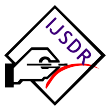Imp Links for Author
Imp Links for Reviewer
Research Area
Subscribe IJSDR
Visitor Counter
Copyright Infringement Claims
Indexing Partner
|
Published Paper Details
|
|
| Paper Title: | Comparison of efficacy of negative pressure wound therapy vs conventional normal saline dressing in diabetic foot |
| Authors Name: | Dr. Koli Nikhil Vanura , Dr. Arun Kumar. T |
| Unique Id: | IJSDR2306108 |
| Published In: | Volume 8 Issue 6, June-2023 |
| Abstract: | Introduction: Wounds are a major source of morbidity and sometimes, mortality and there are several ways to treat them. Negative pressure wound therapy (NPWT) is one way, and this involves the use of a suction device to aspirate and remove fluids, debris, and infectious materials from the wound bed to promote the formation of granulation tissue and wound healing. Another way is with the use of conventional wound dressings. Methods: A total of 40 patients of Diabetic foot ulcer who were admitted in the department of general surgery were included in the study. Study group A received negative pressure dressing therapy. Dressing was changed every 3rd day. Control group B received daily dressing changes with saline-moistened gauze. Treatment outcome and patient satisfaction was assessed in terms of time taken for wound closure and reduction in the bacterial burden of the wound. Results: 13 wounds became pus culture negative for organisms in 3rd culture sample in NPWT group, but in conventional group, only 9 patients attained pus culture negativity in 8th sample. And this showed the power of NPWT in reducing the bacteriological burden of diabetic wounds. 11 out of 20 patients, wound closure was attained within or equal to 2 weeks in NPWT group. 7 out of 20 patients, wound closure was attained within or equal to 4 weeks in conventional dressing group. And this showed the power of NPWT in reducing the duration of wound closure mainly by skin grafting. Complete clearance of aerobic flora and anerobic flora was observed much earlier in patients who received NPWT. Interpretation & Conclusion: NPWT is effective in reduction of bacterial flora of diabetic wounds as the wound showed pus culture & sensitivity negative for growth. NPWT enhanced granulation tissue formation leading to earlier wound healing and faster recovery compared to conventional wound dressings. |
| Keywords: | Negative pressure wound therapy (NPWT); Wound healing; Granulation tissue |
| Cite Article: | "Comparison of efficacy of negative pressure wound therapy vs conventional normal saline dressing in diabetic foot ", International Journal of Science & Engineering Development Research (www.ijsdr.org), ISSN:2455-2631, Vol.8, Issue 6, page no.718 - 722, June-2023, Available :http://www.ijsdr.org/papers/IJSDR2306108.pdf |
| Downloads: | 000337351 |
| Publication Details: | Published Paper ID: IJSDR2306108 Registration ID:207196 Published In: Volume 8 Issue 6, June-2023 DOI (Digital Object Identifier): Page No: 718 - 722 Publisher: IJSDR | www.ijsdr.org ISSN Number: 2455-2631 |
|
Click Here to Download This Article |
|
| Article Preview | |
|
|
|
Major Indexing from www.ijsdr.org
| Google Scholar | ResearcherID Thomson Reuters | Mendeley : reference manager | Academia.edu |
| arXiv.org : cornell university library | Research Gate | CiteSeerX | DOAJ : Directory of Open Access Journals |
| DRJI | Index Copernicus International | Scribd | DocStoc |
Track Paper
Important Links
Conference Proposal
ISSN
 |
 |
DOI (A digital object identifier)
  Providing A digital object identifier by DOI How to GET DOI and Hard Copy Related |
Open Access License Policy
Social Media
Indexing Partner |
|||
| Copyright © 2024 - All Rights Reserved - IJSDR | |||






Facebook Twitter Instagram LinkedIn